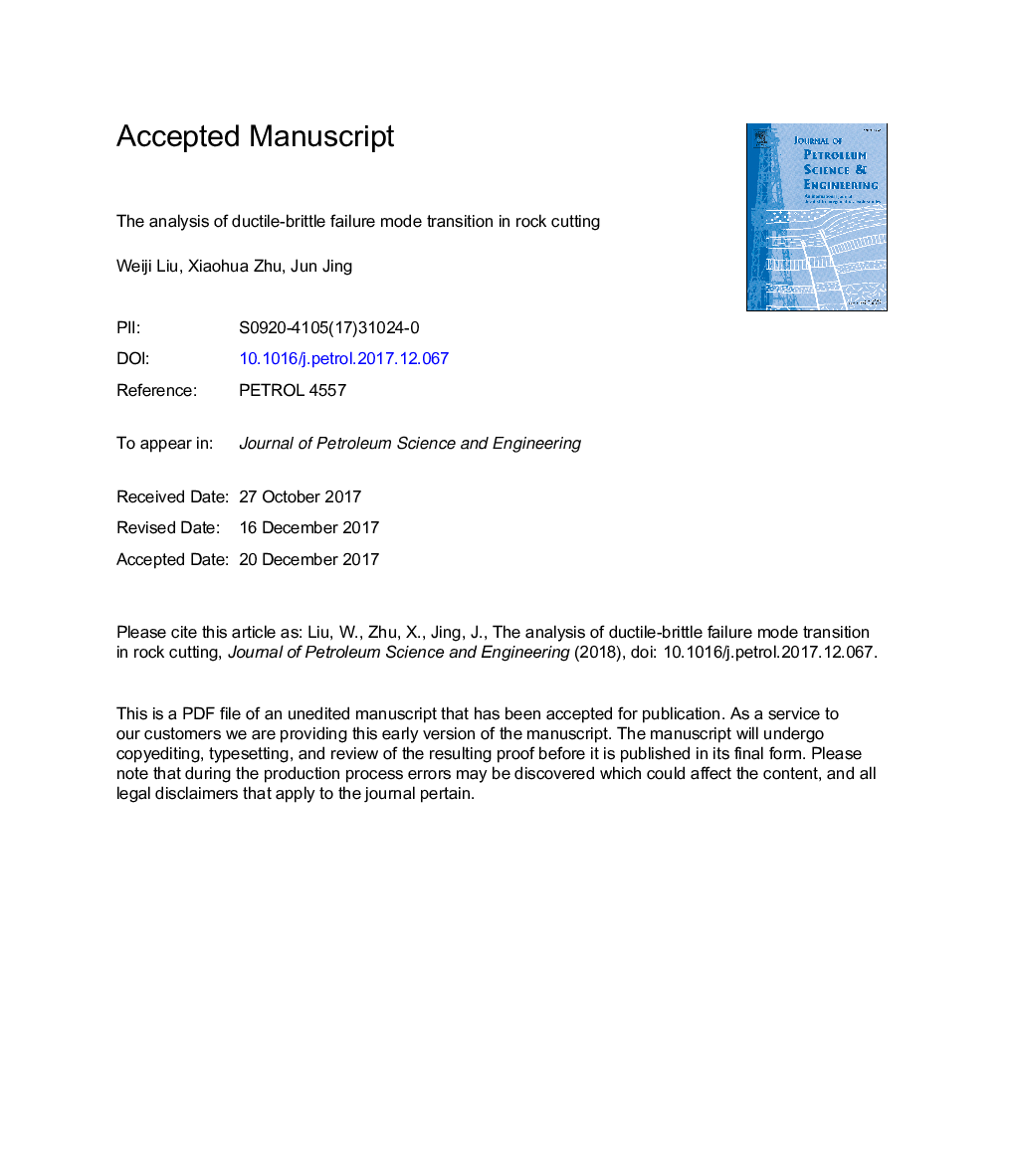| Article ID | Journal | Published Year | Pages | File Type |
|---|---|---|---|---|
| 8125295 | Journal of Petroleum Science and Engineering | 2018 | 22 Pages |
Abstract
It is well known that there exhibits a transition of failure mode from ductile to brittle in the rock cutting process. The rock failure modes directly influence the design of cutter and the determination of optimum drilling parameters etc., which has an essential effect on the drilling efficiency and cost. It is therefore quite significant to analysis the ductile-brittle failure mode transition during rock cutting. For this purpose, an effort was made to model the critical depth of cut of the rock failure transition from ductile to brittle mode based on the rock fragmentation theory. What is more, the numerical simulation of rock cutting is also conducted to reproduce the transition by using the discrete element method (PFC2D). The process of the rock failure transition and its influence factors are performed, the correctness of the critical depth of cut model is verified by the results of numerical simulation and laboratory experiment. The research results show that the ductile failure mode of rock occurs when the depth of cut is shallow, and the corresponding Mechanical Specific Energy (MSE) almost remains a constant. As the depth of cut increasing the brittle failure will take place and the magnitude of MSE will decrease. The critical depth of cut observed under the condition of hydraulic pressure is larger than the atmosphere pressure, as well as the MSE. Besides, larger cutting velocity and rake angle both will result in larger magnitude of critical depth of cut and MSE. The work has done in this paper provides a very useful approach for predicting the critical depth of cut which can be used to optimize the drilling parameters, and makes a well understanding of ductile-brittle failure mode transition in rock cutting.
Related Topics
Physical Sciences and Engineering
Earth and Planetary Sciences
Economic Geology
Authors
Weiji Liu, Xiaohua Zhu, Jun Jing,
